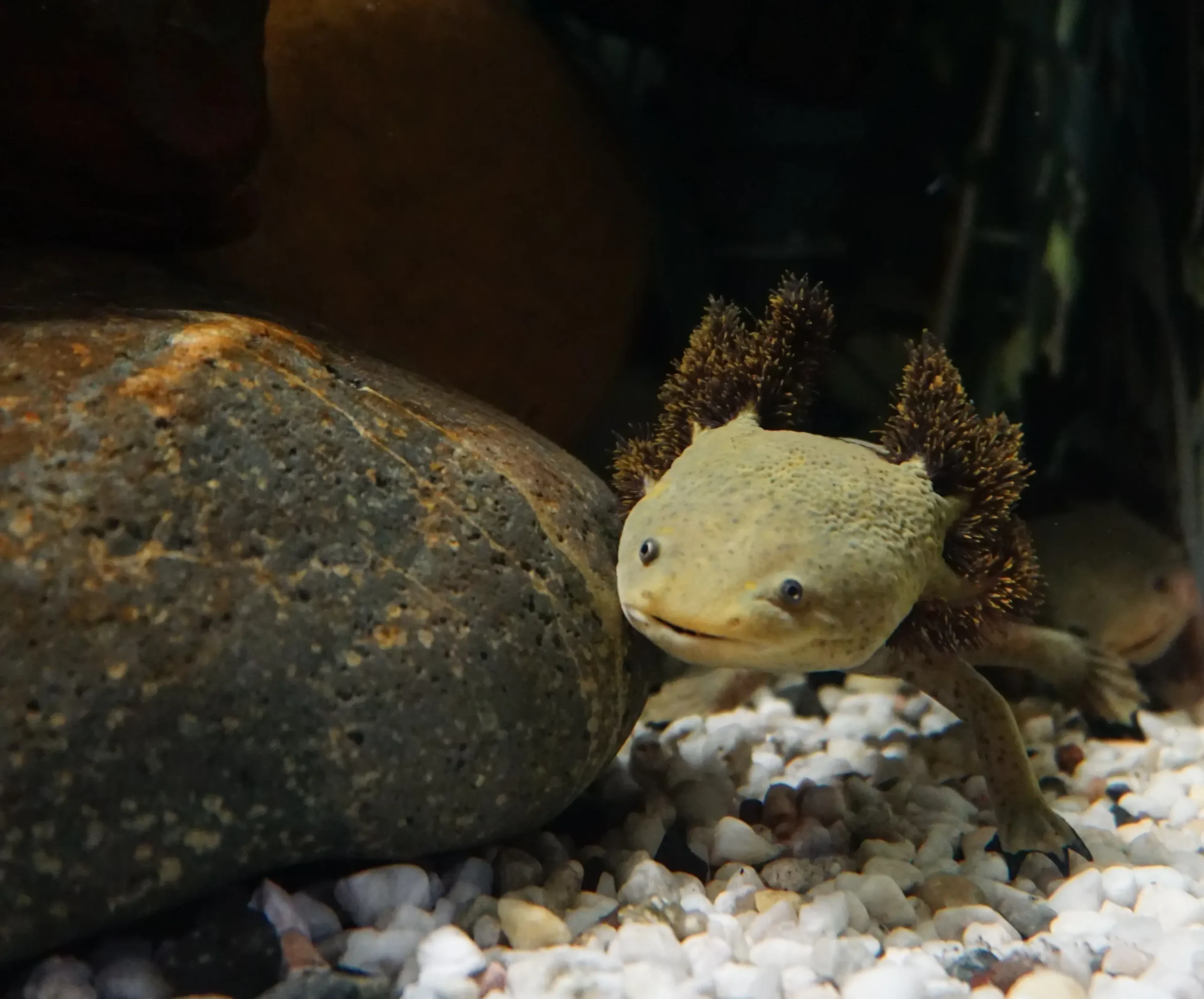Axolotls are cold-water amphibians and thrive in cooler environments, between 60°F and 68°F (15°C to 20°C). If the water gets too warm, it can stress them out, weaken their immune system, and even become life-threatening.
That’s why you need to keep their tank cool, especially during summer or in naturally hot climates.
Here, I’ll share practical ways to maintain a stable, cool environment for your axolotl. If you’re a new axie parent or want to upgrade your tank setup, the tips will create the perfect chill zone for your aquatic buddy.
Let’s dive in!
Table of Contents
Axolotl Temperature Sensitivity and Why Cooling Matters
Axolotls are native to Mexico. Their natural habitat receives water from springs and snow melt from nearby mountains. Being native to high-altitude lakes, axolotls are poikilotherms. They are cold-blooded animals that cannot regulate their body temperature and depend on water temperature to function.
Water temperature affects their metabolic rate, feed intake, growth, reproduction, enzyme function, immunity, and overall health.
High temperature increases axolotl metabolic rate and affects digestion. The stressed axolotls are more susceptible to diseases and infections. Moreover, high temperature also favors bacterial and fungal growth in the water tank.
Ideal Temperature Range for Axolotls: The optimal temperature range for axolotls is 15-20°C (60-68°F).
Temperature above 20°C (68°F) is not tolerated, and the axolotls show visible signs of stress. A temperature above 24 °C is dangerous, fatal, and shortens the life span of axolotls.
The Axolotl Tank Cooling Methods
My advice is to invest in a chiller so that you don’t have to worry about daily temperature fluctuations in the water tank. Tank chillers are super reliable and practical to maintain stable and cool temperatures. Aquarium fans are also good if you live in a cooler region. A quick hack to bring down the temperature is using frozen bottles or ice packs.
More creative methods include running water through coils or an external filter placed inside an old fridge. It can cool the tank effectively, depending on the setup, but requires continuous operation and strong pumps to prevent frozen pipes.
Water changes provide only temporary relief, and insulating the tank can slow down heat gain from the environment. Be mindful of internal heat sources like filters, lights, or placing the tank in direct sunlight, as these can raise the temperature significantly.
Let’s take a detailed look at all the options.
1. Tank Positioning
The location of the tank is an important part to prevent temperature fluctuations. Along with heat, bright direct sunlight is not something axolotls appreciate.
So, select a spot away from sunlight and heat sources like radiators, game consoles, heating vents, televisions, and refrigerators. Place them somewhere with adequate airflow.
An ideal location is the basement, because it is cool, away from bright light, less remote, and uninterrupted. Garages are also a good option as they have a relatively stable temperature compared to the rest of the house.
If your apartment is small or you do not have a garage or basement, place the axolotl in the coolest room with an air conditioner. Or a place with portable air conditioners or window units. It’ll aid in cooling, but you can’t rely only on air conditioning.
2. Evaporative Cooling with Aquarium Fans
Aquarium cooling fans increase evaporation from the water surface. They pull heat away and lower water temperature by 2–4°C (4–7°F), in low-humidity environments. These fans are affordable and easy to install. However, there are some drawbacks, like:
- You need to monitor the temperature constantly.
- They increase evaporation rates, so regular water top-ups are needed.
- Not effective in humid areas with high temperatures.
- Not sufficient for spaces with inadequate air flow or poorly ventilated rooms.
- Strong airflow or turbulence can stress the axolotl.
For extra cooling, you can pair them with frozen water bottles. But choose quiet, high-rated fans.
The Koonie clip-on fan is the perfect size for an axolotl tank. It runs quietly and does its job without any fuss. Considering its functionality and quality, it is budget-friendly and worth your money. There is an adjustable mount so you can target airflow exactly where you need it.

3. Water Chillers
Here comes my favv, the chillers. They are the most reliable one-time investment you won’t regret buying.
If you need the most consistent and stress-free solution, invest in a dedicated aquarium chiller.
They function like mini refrigerators, and circulate tank water through a cooling unit and return it at the desired temperature. They are pricier than fans, but offer unmatched precision, are ideal for hot and humid climates, and work well with larger tanks.
You can place them near your tank, and the working principle is based on the refrigeration cycle with a refrigerant. The tank water circulates through the cooling unit, the refrigerant absorbs heat from the water, and releases it into the surroundings. The chilled water returns to the tank.
There’s no need to worry about temperature fluctuations, and chillers make the experience more comfortable. The peace of mind they offer is everything. There are plenty of options in the market and you can match your budget.
BAOSHISHAN Aquarium Chiller
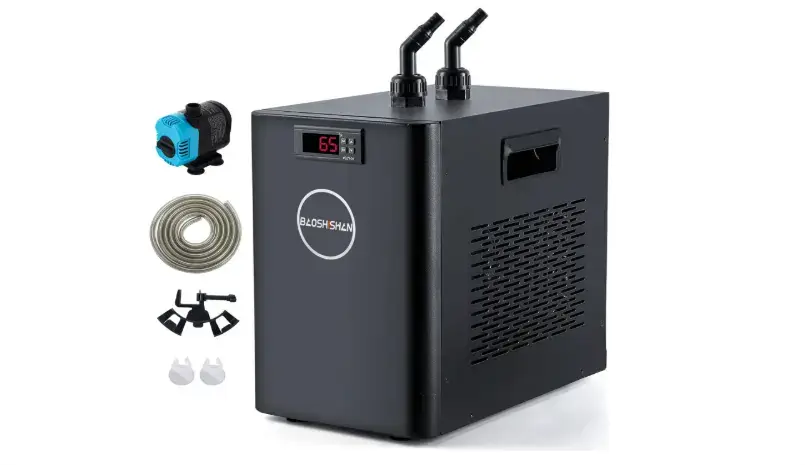
I like the BAOSHISHAN aquarium chiller. Within one hour, it can drop the temperature by 3-4 degrees. It has little sound, just like a mini fridge or quiet bathroom exhaust. I am very pleased with this chiller so far. It was a bit hard to set up but the efficiency, digital controls, and other features are worth the money! Read its full review here.
Vevor is also a good option and has excellent performance and build quality. It has a bearable noise, and maintains the temperature instantly! The downsides include higher energy consumption, setup complexity, and upfront costs. But for long-term peace of mind, it’s a worthwhile investment.
4. Frozen Water Bottles or Ice Packs
It is a quick and cost-effective emergency fix. You can freeze bottles filled with dechlorinated water or use aquarium-safe ice packs. Then place them in the tank.
Don’t submerge bottles completely. Only the bottom inch or so should touch the water. And never allow ice to come into direct contact with your axolotl.
It will drop the temperature in the water tank, but you need to replace them to avoid fluctuations.
Keep at least 4-5 bottles in backup and rotate them as they melt. Also, avoid sudden temperature drops, as they may stress the axolotl.
The method works in a pinch, it’s labor-intensive, and may cause temperature swings. You should reserve it for short-term relief or use it in combination with other methods.
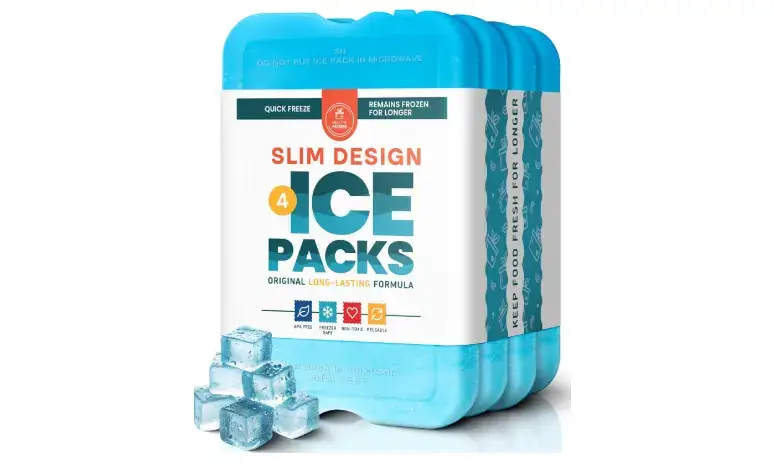
Temperature Monitoring
If not using a chiller, you must monitor the temperature of the tank. Use a thermometer that provides reliable and detailed temperature readings. I use a Capetsma Aquarium Thermometer. It’s basic yet effective, and shows real‑time temps and logs the day’s highs and lows. There are no wires and the clear LCD screen helps in stress‑free temperature control.
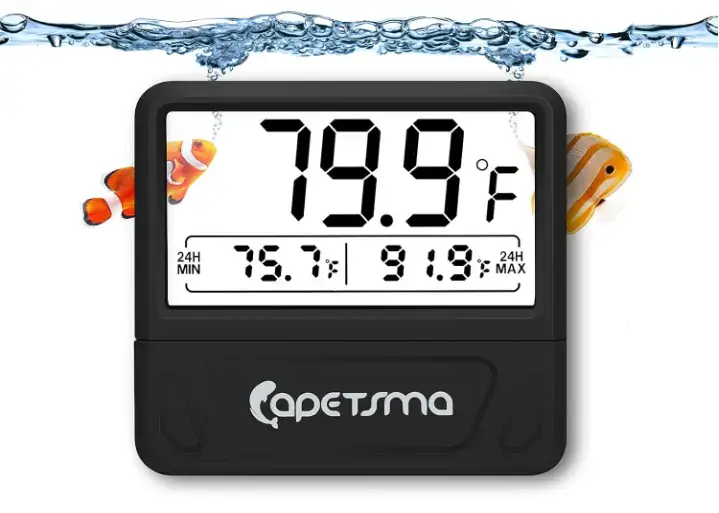
Other Tips and Workarounds
Here are some other creative and cost-effective workarounds to keep your axolotl’s environment cool.
- If you are using a canister filter, buy a styrofoam cooler and place your filter in it. Then place the frozen bottles or ice packs around it. It offers several hours of passive cooling.
- Avoid internal filters with built-in motors. They generate heat directly inside the tank. Use sponge filters, external HOB filters, or anything that disperses heat away from the water.
- Avoid using high-wattage lights, as they may raise the temperature.
- Some axolotl owners do frequent partial water changes using chilled or cold dechlorinated water during heat waves. Do it in moderation as there’s a risk of disturbing your water parameters, and you might need to cycle the tank again.
Repurpose Your Mini-Fridge Into a Chiller
If you want a DIY setup, you can use your fridge as a chiller system. The method involves circulating the tank water through a cold bath.
You can build a sump using an insulated ice chest, place frozen bottles or ice cubes inside, and circulate tank water through loops of tubing submerged in the cold water. A small submersible pump can push water through these coils, with the temperature controlled by adjusting the number of loops submerged. This type of system requires some setup but can be surprisingly effective.
Even simple systems, like rotating frozen water bottles with small fans, can keep tank temperatures within a safe range. For example, use two small fans on top of the tank and one strong floor fan nearby, alongside a rotation of frozen bottles. It can maintain water temperatures around 67°F (19°C), even in warmer rooms.
Though chillers are ideal for long-term and stable cooling, these workarounds can also work for short-term heat challenges. You need a combination of smart positioning, externalizing the heat sources, and the creative DIY cooling can go a long way!
Also Read:
The Axolotl Diaries
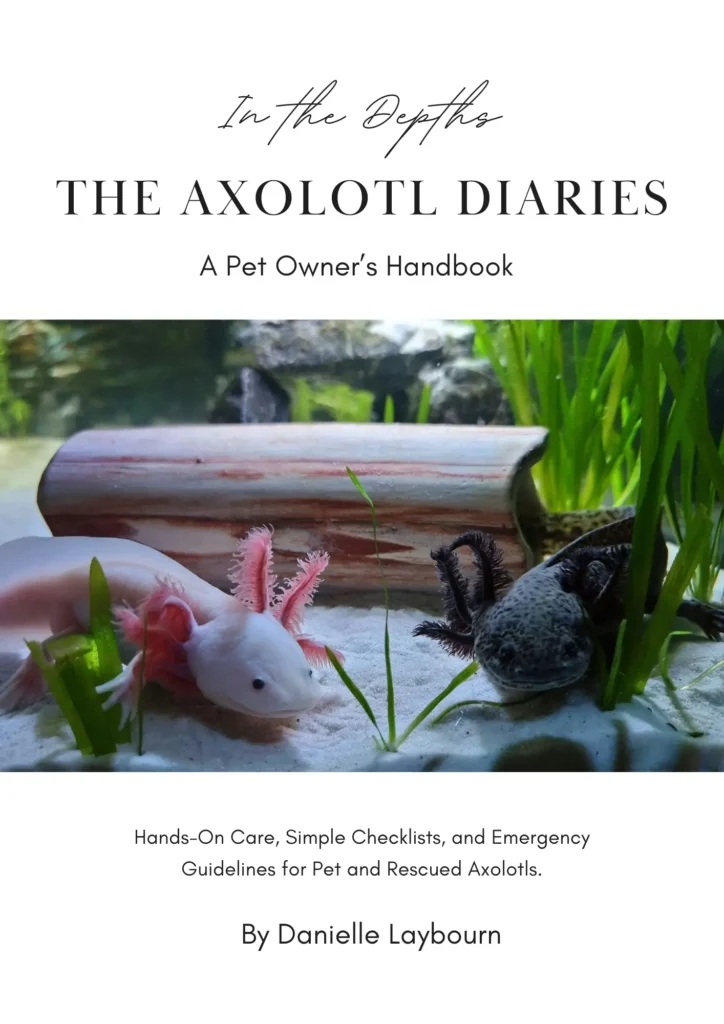
A clear, step-by-step handbook (50+ pages) about axolotl care that covers basics, safe tank requirements, cycling, feeding, common health issues, and more.
Rescue-informed and vet-aware. For anyone who wants to raise a healthy, happy axolotl.
Find everything in plain language, backed by real experience.
Grab printable cheatsheets, practical tips, and easy troubleshooting guide inside!
Price: $14.99
Final Thoughts
Water temperature maintenance is a core part of responsible axolotl care. They are sensitive to heat, and exposure to high temperatures can lead to serious health issues.
Remember to:
- Use preventative measures, such as smart tank placement.
- Select cooling methods that suit your climate, tank size, and budget. Chiller is the most reliable option.
- Monitor your water temperature regularly.
If you opt for a reliable chiller, a fan and ice combo, or a DIY cooling system, just pay attention to temperature. Build and maintain the perfect cool zone for your axolotl, and keep them healthy, active, and stress-free!
Disclosure: This post contains affiliate links. As an Amazon Associate, I earn from qualifying purchases. It means that if you click on an Amazon link on this site and make a purchase, I may earn a small commission at no extra cost to you. Thank you for your support!
